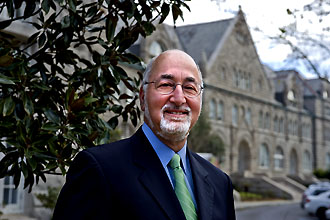TARP Postmortem: "Something Had to Be Done"
Few pieces of legislation in recent memory have sparked more vitriol than the Troubled Asset Relief Program, which expired in early October. Yet despite the public perception of the financial bailout, economists are giving the program relatively high marks when looking at the costs versus the benefits.

“I think something like TARP was absolutely necessary at the time it was passed,” says Steven Sheffrin, professor of economics and executive director of the Murphy Institute. (Photo by Paula Burch-Celentano)
“[Congress] spent roughly $400 billion of the $700 billion that was authorized, and they're going to get all but about $50 billion back,” says Steven Sheffrin, professor of economics and executive director of the Murphy Institute at Tulane. “So from a financial point of view, I think it was a success.”
A bipartisan majority in Congress enacted TARP in October 2008 to prop up banks through government purchases of mortgage-based securities, thereby stopping the economic slide that threatened to drag the country into another depression. The heated debate surrounding TARP will be remembered by many in the reviled “too big to fail” tag put on major financial institutions.
While the bad taste remains in the mouths of those who saw TARP as the rescue of major Wall Street players, Sheffrin says the move was “absolutely necessary.”
“If Wall Street wasn't bailed out, it would have been worse for Main Street,” Sheffrin says. “I think there was a real danger of a major financial collapse. Banks were in difficult shape, and there was considerable uncertainty, so something had to be done.”
Sheffrin says the government probably made an already unpopular program even more hated by extending assistance to car manufacturers and companies such as AIG. Despite the fact that TARP continues to be a dirty word politically, Sheffrin believes history will judge the program favorably.
“I think people will end up seeing it as a necessary evil in trying to stabilize the economy,” Sheffrin says. “It may take a while for the average person on the street to share that view, but that's what will probably become standard in textbooks.”
